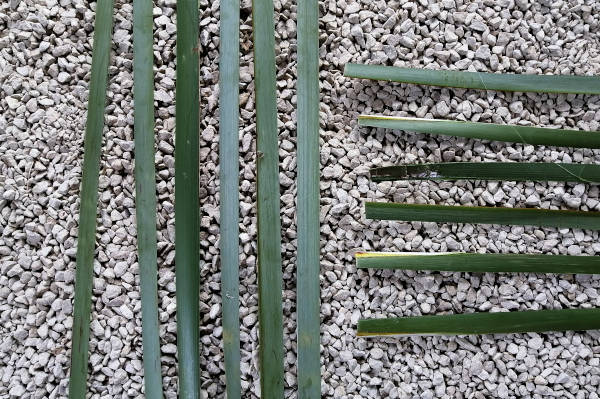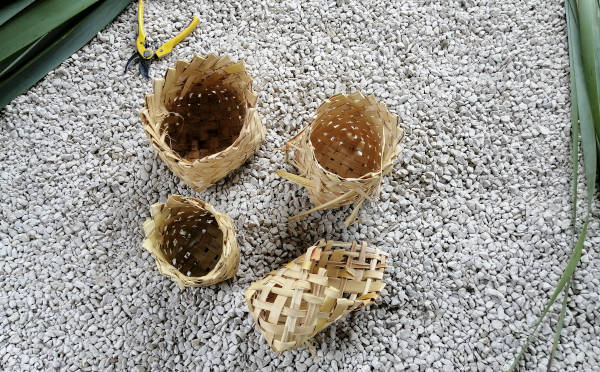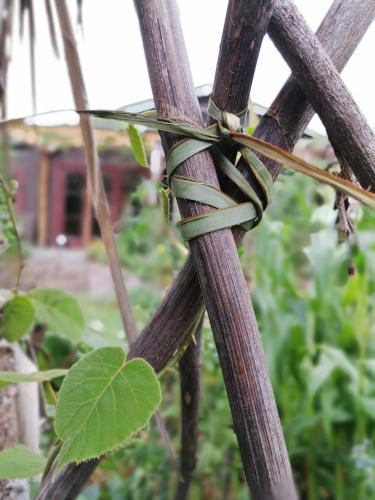Preparing the flax strips for your square basket
Details
This design requires 2 sets of an even number (4, 6, 8 etc.) to create the square base and parallel sides. These 2 sets will be woven together at right angles or perpendicular to one another.
The larger the number of strips the bigger the floor area of the basket will be and the shorter the walls can be. Using more strips increases the difficulty and time involved in fabrication.
Making a very small basket (2 sets of 4) is fiddly so start with 2 lots of 6 as demonstrated here.
Split the flax leaves into strips of a uniform width between 15 and 25mm. The wider the strips the more they will shrink as they dry resulting in a basket with more gaps. Smaller strips can be woven tighter and produce a smaller but tidier and stronger basket.
The larger the number of strips the bigger the floor area of the basket will be and the shorter the walls can be. Using more strips increases the difficulty and time involved in fabrication.
Making a very small basket (2 sets of 4) is fiddly so start with 2 lots of 6 as demonstrated here.
Split the flax leaves into strips of a uniform width between 15 and 25mm. The wider the strips the more they will shrink as they dry resulting in a basket with more gaps. Smaller strips can be woven tighter and produce a smaller but tidier and stronger basket.
Belongs to the following Article
How to weave a simple flax basket
Flax is an easy to grow New Zealand native with heaps of uses around the garden as well as the flowers being a food source for bellbirds during late spring and early summer.
Follow basic step by step instructions and guidance to learn what you need and how to create your own woven flax basket.
Follow basic step by step instructions and guidance to learn what you need and how to create your own woven flax basket.



